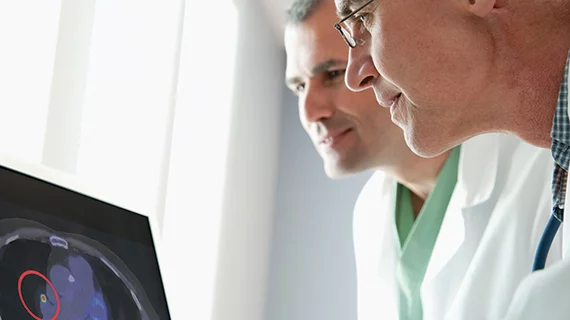Many radiologists still unfamiliar with opportunistic screening applications
Artificial intelligence-enabled applications for opportunistic screening (OS) could provide valuable insights into a number of health metrics. But such technology is only as beneficial as its uptake, and a new analysis suggests that there is still a general lack of awareness surrounding OS among providers.
Although AI implementation in clinical practice has taken flight in recent years, OS utilization has been less common. A new paper in Clinical Imaging suggests that up to 60% of radiologists are not familiar with OS applications, which could inhibit their adoption in the near future, authors of the study suggested.
“For burgeoning AI applications to be implemented widely, users need to value, trust, and adopt the applications,” corresponding author Adam E.M. Eltorai, from the Department of Radiology at Brigham & Women's Hospital, and colleagues wrote.
To get a better understanding of providers’ perceptions of OS applications, researchers polled 7,500 practicing radiologists with ACR membership. Of those, more than 4,600 participated, the majority of whom were males who practiced diagnostic radiology.
Just under 70% of the respondents reported utilizing some form of AI in clinical practice. The same amount viewed AI’s potential positively, though less than half reported that applications had met their expectations in terms of accuracy.
Although half of respondents were optimistic about the potential of opportunistic screening, 57% were unfamiliar with the concept. Radiologists felt that OS would be most beneficial for spotting osteoporosis/osteopenia (81 %), fatty liver (78 %), and atherosclerotic cardiovascular disease risk (76%).
While the associated costs for patients and providers were referenced as cons of OS, many said they would be willing to spend an extra 1-3 minutes to review findings outside of an exam’s clinical indication. Most agreed that an additional section in radiology reports would be necessary to inform referrers of an application’s incidental findings, and that a radiologist would need to sign off on said findings.
These insights and suggestions can be perceived as “the view of the customer,” the group noted, adding that the input could be valuable in guiding adaptations of similar screening tools.
“Stakeholder feedback should be evaluated early in the development of new technology to refine its value propositions, define challenges, and improve acceptance,” the authors wrote. “Increasing end-user familiarity with AI-enabled technologies and development of society guidelines/recommendations are likely essential prerequisite steps before scalable adoption of AI applications in radiology.”
Learn more about the authors’ findings in Clinical Imaging.

